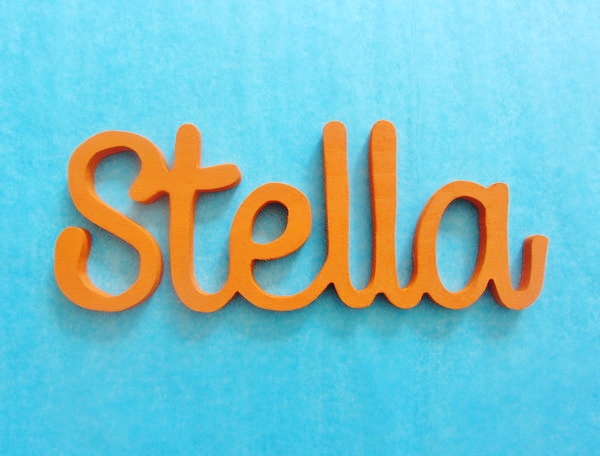
Supplies

- Safety glasses
- A piece of 1.25–2 cm (1/2"–3/4") thick wood
- Scroll saw
- Drill and drill bit
- Saw blades
- Pencil/marker
- Sanding paper
- Glue stick
- Scissors
- Clear packing tape
- Paint or other finish (optional)
Safety
- When working with power tools such as saws, it is very important to wear safety glasses at all times.
- Make sure you are fully concentrating on the task at hand, as saws and other power tools can do a lot of damage very quickly!
1. Designing Your Word Art
Step 1
The first task when making custom word art is to find the perfect font. There are many fun, free fonts available on the Internet. It is generally best to find fonts that are not too thin and have connection points between the letters, if you would like the word to be one piece.Once you have found the perfect font, type the word you would like in that font. If you need to increase the size of the word, copy and paste it into a word processor and increase the size as needed. Once the word is the correct size, print the document out.

Step 2
Even the best font might not be quite perfect for making word art. If there are any areas that are still too thin to be structurally sturdy, once they are cut you can add a bit of thickness through those areas. I like to use a contrasting marker to fill in the areas that need a bit of tweaking.
Step 3
Once you have made any modifications needed to the design, it is time to cut the word out. Carefully cut along the edges of your word.
Step 4
Next, affix the pattern to the wood. Since the pattern might be a bit difficult to handle, it is helpful to add a few small dots of glue with a glue stick to the back of the pattern. Don't worry: the glue will easily sand off if you only use a little bit.
Step 5
After you have placed the pattern on the board and gently affixed it in a few places with glue, use clear packing tape to thoroughly adhere the pattern. Not only will this keep your pattern from moving around or slipping, but it will also help lubricate the blade if you are using a hard or thick wood.
Step 6
Make sure to cover the word completely with tape. Leave a bit of surplus tape all around the word.
2. Cutting Wooden Word Art
Step 1
With the pattern design work done, it is time to cut out your masterpiece! The key to lovely, flowing letters is to cut slow and steady. Start at one end of your word and carefully work your way around the project.
Step 2
Once you have cut around the outside of the letters, it is time to cut any closed counters that your letters might have. What is a closed counter, you may ask? Well, it is a space that is enclosed in a letter. The letters A, B, D, O, P, Q, R, a, b, d, e, g, o, p, and q all have closed counters.To do this, first you will need to drill a hole in the closed counter area. Once the hole is drilled, you'll need to thread the saw blade through the hole. Now you can slowly and carefully cut around the counter area.

3. Finishing
Step 1
Once your project is completely cut, it is time to sand! Carefully sand the nooks and crannies of your word with sandpaper. I like to use 150 grit.
Step 2
Painting time! You don't have to paint your project, particularly if it is made out of colorful wood like walnut or hickory. However, if you do want to paint it to complement the space you are decorating, now is the time. After you have painted, the grain might be raised a bit, but don't worry: a light sanding should take care of any rough spots. If any paint is removed during the finish sanding, you can do a quick touch-up.
Voila!

In this tutorial, you learned how to design word art, transfer the design to wood, cut it out using a scroll saw, and use a drill to make holes to make custom wooden word art!
This is a great project to hone your woodworking skills, and it would also make a fantastic handmade gift.






























































.png)